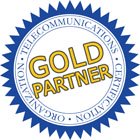Study Guide Notes For This Lesson
These are the words that are displayed and spoken during the lesson. Get these notes for the whole course in the Certification Study Guide, available in print or eBook. Many people tell us a printed companion book enhances their learning!
What is a protocol?
We use the term protocol in the data communications business the same way it is used in the diplomacy business: it is a plan for how two different systems will interact.
In diplomacy, protocol officers get together in advance and hammer out the plan: it says who is going to greet whom at the bottom of the steps of the aircraft, what color the carpet is going to be, what music the band will be playing, are you allowed to be sitting down while the president of the United States is in the room… the plan on how two countries will interact.
To communicate, we need to have a set of conventions that specifies how we are going to communicate. This is the definition of a protocol.
Mutual adherence to an agreed protocol or set of protocols makes communication possible.
In an open system, the protocols are published standards: everyone agrees on the protocols to be used.
Functions to be performed
Quite a number of areas and functions must be covered in a communication protocol.
Taking e-mail as an example, first, we have to agree what the format of the message will be.
How will the message be coded into 1s and 0s? Will it then be encrypted? We'd better have an agreed plan for that, or we won't be doing much communications...
Most communications today is client-server… and e-mail is an easy example. When checking Outlook-type email, it is necessary to log on to your mail server with a username and password and be authenticated… so part of the protocol has to be how to transmit usernames and passwords to the server.
One could imagine the mind-numbing complexities created if it is desired that the password not be transmitted as clear text, but encrypted as a measure against eavesdropping… how to transmit the decryption key for the password without encrypting it?
Once authenticated, then it is necessary to transport the message from the server to the client, and there are a number of things that have to be figured out.
We have to be able to perform segmentation and reassembly, breaking up the message into manageable pieces for transmission and putting it back together at the receiver… in the correct order.
We have to be able to encapsulate control information on the segment. An example of control information encapsulated on a segment of data is a network address.
Once we make a packet with a network address, how are routers going to make routing decisions based on those network addresses?
Probably the most important aspect is error control: sending data with errors and not knowing about it is probably worse than not sending any data at all.
Sometimes error control is performed on each link. Sometimes not. We always have to check errors end-to-end.
How do we do flow control: when one system can't process information as fast as the other, and has to have a way of temporarily interrupting the flow of data.
How do we do access control – when there is more than one station on the link, which gets to talk next?
At the bit level there are things that have to be resolved: what physical medium to use and how to represent the bits on the physical medium. How to do conversions between different media and different bit rates?
All this and more has to be part of the plan.
Monolithic vs. structured protocols
There are two basic choices to come up with a plan: monolithic or structured protocols.
A monolithic protocol would embody all of the required functions in a single standard. The problem with this approach is that it becomes unwieldy when all possible variations are included in the single package, and makes maintenance impossible.
A structured approach, where we divide the totality of functions into easy pieces, then write protocols covering each of the pieces, is more workable.
This allows us to mix and match: for example, we could keep everything the same on all systems, but allow different locations to employ any type of local cabling and framing system they wished.
It would be possible for an individual to develop a set of open, structured protocols for communications.
This would only be useful if everyone, or at least a critical mass of users, agreed to use that particular set of protocols.
We are always interested in implementing standard protocols.
Protocols vs. Standards
A protocol is a plan. A standard is when everyone agrees on a particular plan.














 Diplomatic Protocol
Diplomatic Protocol
